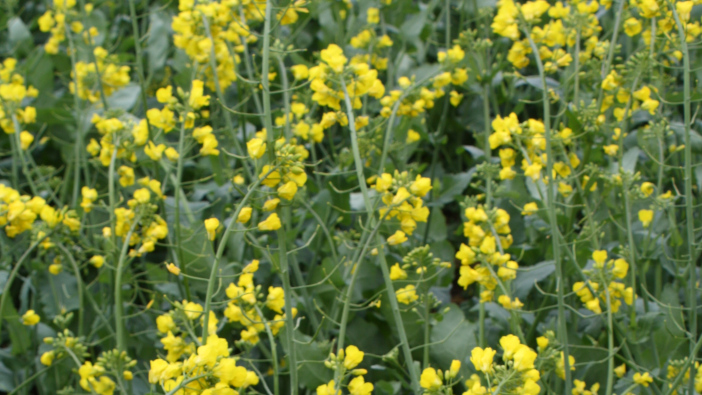Mark, Philip and Ben Lawson, who farm in Newton Stewart in Dumfries and Galloway, have won a silver award in the 2022 YEN awards with a crop that achieved 84% of its yield potential, coming in at 7.39 tonnes per hectare.
“When the awards were announced we couldn’t believe it. It was really unexpected, we never expected anything like that from a crop on this farm!” said a delighted Mark.
“It’s really wet here – and the soils are not the best – which although gives us some reprieve from the rainfall as the water runs through it – also means we don’t have lovely, deep soils for the crop to sit its roots down into – not the best for high yielding crops.”
The farm stands out in the area for having a solely arable rotation in a livestock farming locale. The brothers bought the former livestock farm in 1989 but as the cost of feed increased, they decided to grow their own ration ingredients. Now, the arable side has taken over – barring some bed and breakfast cattle – with wheat, barley and oilseed rape grown.
Grass is grown for silage, while some rougher pastures support a flock of sheep.
“Our farm average oilseed rape yields can be around 3.7 t/ha but if we can push this to 4.2-4.4t/ha we are happy with that.
“It hadn’t really occurred to us to enter YEN. We didn’t think we had much hope of winning anything and were unsure what we would gain from the experience, but a conversation with our seed advisor, Douglas Bonn of Nickersons convinced us to enter.

“We had a field of Acacia oilseed rape that looked good and showed promise, so on discussion with Douglas we were persuaded to enter part of that field.”
Acacia is bred by Limagrain UK and is reportedly the most popular conventional oilseed variety in the country, with strong autumn growth and good spring vigour, as well as solid disease resistance and short, stiff straw, high oil content and yield.
“Whilst there has been a tendency to move into hybrids generally, many growers have found that Acacia delivers the vigour and consistency of performance that they are looking for,” explained Mr Bonn.
He added that Mark has always been interested in improving what he does on farm, so when the crop showed so much promise it made sense to enter it into the YEN for the feedback gained from the judging.
An award-winning crop
“All in all it was a pretty easy season on the crop,” said Mr Lawson. “Autumn 2021 had been really kind – all the crops drilled in good time. With the high levels of rainfall here our biggest challenge is getting the crops in the ground in good time.
“Following winter barley, the oilseed rape was drilled into a nice dry seed bed. We min-till using a Simba Xpress which creates a good tilth for the seed. Seed rate was 3.55kg/ha – with an aim for an established plant count of 24 plants/m2.”
With regards to the agronomy of the crop, Richard Bray, agronomist with Agrovista based in southwest Scotland said: “It was a season when everything came together.”
“The crop came out of the winter well, so we included growth regulation at stem extension as we wanted to avoid a lodged or leaning crop that would not mature evenly or maximise pod fill. With this, we also applied a broad-spectrum foliar feed.
“Tissue analysis highlighted the crop was still short of boron. So we addressed this at the early flowering stage with a 4-way mix containing boron, a carboxamide and triazolinthione fungicide for sclerotinia, a bio-stimulant to boost yield by increasing the numbers of seeds per plant and an adjuvant to aid uptake.”
Mr Bray added that the flowering period can last for several weeks this far north, so a second mix at the mid-flowering point was applied with the addition of crop enhancer to increase chlorophyll production and maximise green leaf area.
“As far as weeds and diseases go, we can have issues with sterile brome but the oilseed rape does allow us to clean that up reasonably well. Light leaf spot can be an issue but again we were able to keep on top of that in the spray programme.
“It really is very rewarding for the Lawson’s to achieve this success and do so well against the more recognised arable areas of the east,” said Mr Bray.
Harvest promise
Mr Lawson explained how exciting it was when the combine started working in the field of Acacia.
“We started harvesting on the 5th of August in a neighbouring field and that looked pretty good, so we were very hopeful when we moved into the YEN crop – and in fact, we struggled to get it all into the trailer- so we knew we were onto some high yields.”
“Entering YEN has been a really positive experience, we have learnt so much and will use what we can in this year’s crop. We will definitely enter YEN again there is always more to learn and build on from last year. Our objective is to be able to produce this level of yield consistently, year on year.”
Why did oilseed rape yield so well in 2022?
A decade of YEN research shows that while light and water availability remain critical limiting factors to yield potential, successful crops are those with optimal biological growth to convert the energy available into the grain.
Maximising biomass puts crops in a prime position to convert sunlight into yield, even if that yield potential is limited by factors beyond your control. So how did 2022 fare?
- Analysis by YEN of historic weather patterns and OSR yields have revealed that high-yielding seasons are associated with a warm October, a dry December, warm minimum March temperatures, a dry/sunny April and a wet/cool May.
- The 2021-22 season was characterized by a warm October, a dry December and winter, an average March temperature, a dry sunny April and an average rainfall and warm May.
- The dry spring helped to restrict canopy growth which will have helped optimize canopy size at flowering for a good seed set and reduce the risk of lodging.
- The sunny conditions in April will have helped crops to set many pods. Rainfall in May will have been particularly beneficial for crops suffering from the earlier dry spring conditions, but the dull conditions might have restricted the number of seeds set per pod.
- On the whole, conditions were conducive to setting high seed numbers and hence higher potential yields.


